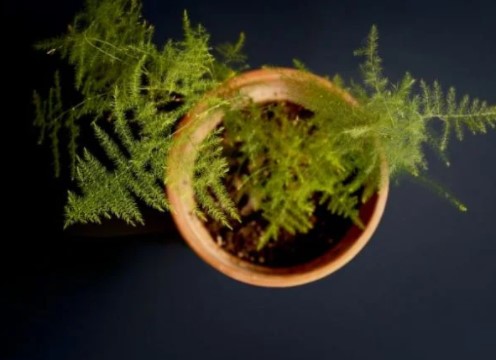Asparagus plants are ornamental plants and can be used both indoors and outdoors as well. Their leaves do not look like typical plant leaves but are pointy and can be sharp sometimes. These can even cause irritation to the hands when cut so gloves shall be worn before cutting the foliage. These ferns can produce tiny flowers and red berries on the top of the leaves when given proper nutrients.
Contents
Asparagus Ferns Turning Yellow, Brown and White
Asparagus ferns are very adaptive in nature. They can grow both in hot and cold weather but they grow best in humid climates. They can be fertilized after the fall season by using fertilizers with high levels of potassium and phosphate levels. They improve the overall quality of the plant and help in growing the essential parts. They have a bright green color but can be changed due to some reason. Some of them are stated below.
Asparagus Turning Yellow
Reasons

Most of the ferns are yellow-green in color. But asparagus ferns are bright green in color. They can change their color and turn yellow because of the over-sufficient watering. Too much water can damage the plant roots which in return changes the color of the foliage. If planted in pots, the excessive water needs space to drain out. If they do not have enough space, the roots do not get oxygen and the leaves turn yellow which can result in Asparagus fern dying.
Insufficient light can also be a reason for these to turn yellow. Kept indoors or planted in shady areas does not provide enough sunlight. Plants need all the nutrients to grow healthy. If not getting one of these, the plant can show the sign of stress and can cause damage. Sunlight is very important as it helps the ferns to get rid of the extra moisture.
Asparagus Turning Brown
Reasons
Asparagus ferns can also turn brown in color. This is because they do not get enough water. Water carries out most of the important functions in plants. Due to lack of water, the roots do not get enough oxygen which in return makes the ferns brown. If the ferns do not get enough of the nutrients other than water or are placed directly in the sunlight, this can also be a factor contributing to turning the leaves crispy brown. When kept indoors, they can get dry because of the cooling or heating systems.
Asparagus Turning White
Reasons

Plants require nutrients for their growth, but they should be provided in balance. Providing them in excess or in low amounts can be bad. Asparagus ferns when exposed to too much heat or sun can turn white in color. Just like humans, they can also show signs by changing the color indicating extreme damage.
If you want to move them to a place with brighter light, gradually expose them in the beginning. Do not place them directly under the sunlight on the first day. Leave them out for two to three hours a day initially so they can get used to the heat. After a week of doing this, you can place them outside in the sun. This will cause any damage to the plant, preventing it from sunburn and turning white.
Taking Care
Here are a few tips and tricks on how can you take care of your asparagus fern at home.
- You should always check the soil before planting the ferns.
- The pots should have a good draining system so the excess water can drain out easily.
- The ferns should be watered with the right amount of water. More or less quantity than required can cause damage to the roots.
- If placed indoors, they should not be directly exposed to sunlight. They should be exposed gradually to avoid any kind of damage.
- Constant misting should be done when used as a houseplant.
All these steps can be used in daily life to grow a healthy asparagus fern at your home.
FAQs
How do you know if an asparagus fern is overwatered?
Can I bring asparagus fern back to life?
How often do you water the ferns?
Conclusion
Asparagus ferns are very adaptive and can adjust in every circumstance. But like all the other plants, they also need the required amount of nutrients. If not provided, they can change from bright green to yellow, brown, white, etc in color. All these different changes show that the plant is going through extreme stress. These signs should be taken into consideration before it damages the plant completely.

